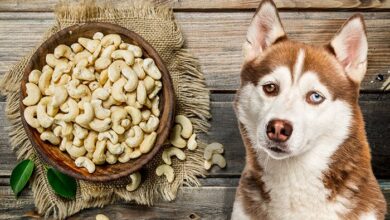
Saltine crackers are a common snack for people because they are low in calories, easy to digest, and often used for a quick energy boost or to settle an upset stomach. However, before giving saltine crackers to your dog, it is important to understand the potential risks. Can dogs eat saltine crackers?
It is best to be cautious about giving saltine crackers to dogs. Processed snacks like saltines can contribute to salt toxicity in pets, with over 2,000 cases reported by veterinarians in the United States each year. Understanding the risks can help you make an informed decision about your dog’s diet.
Although saltine crackers are popular with people, pet experts advise that they can be harmful to dogs. Salt toxicity is a concern, with thousands of cases reported each year. Being aware of these risks is important for keeping your dog safe.
What Are Saltine Crackers?
Saltine crackers are simple, square snacks made from flour, water, yeast, and salt. People often eat them to settle an upset stomach, but the high salt content makes them a poor choice for dogs.
Can Dogs Eat Saltine Crackers?
Saltine crackers are not a good snack for dogs. One or two small pieces probably will not hurt your dog, but they have no nutritional value and can be harmful if eaten in larger amounts.
The Salt Problem
The main problem with saltine crackers is the high salt content. Dogs need much less salt than people, and too much can cause dehydration, high blood pressure, or even sodium poisoning.
Are Saltine Crackers Safe for Dogs?
Dogs should not eat saltine crackers. A very small piece is unlikely to cause harm, but these snacks have no benefits and can be dangerous if your dog eats too many.
Why Saltine Crackers Are Harmful
High Sodium Content
Saltine crackers have a lot of salt. Dogs need much less sodium than people, and even small amounts can be a problem for small dogs or those with health issues.
Risk of Salt Poisoning in Dogs
If a dog eats too much salt, it can get salt poisoning. This happens when sodium levels in the body get too high. Symptoms can show up quickly and include:
- Vomiting and diarrhea
- Excessive thirst and urination
- Lethargy and weakness
- Loss of coordination
- In severe cases: tremors, seizures, or even coma
5 Shocking Dangers of Saltine Crackers for Dogs
If you enjoy sharing snacks with your dog, you might wonder whether saltine crackers are safe. Before offering one, it’s important to understand the potential risks these crackers can pose to your pet.
While saltine crackers won’t immediately poison your dog, they can cause serious health problems that range from uncomfortable digestive issues to life-threatening sodium poisoning. Let’s explore the five shocking dangers that make saltine crackers a risky choice for your beloved pet.
Dangers1.Sodium Poisoning: A Silent Killer
Saltine crackers contain a high amount of sodium, and dogs are more sensitive to salt than people. Even a single serving can be too much for a small dog.
When dogs consume excessive amounts of salt, their bodies struggle to maintain proper fluid balance, resulting in a cascade of potentially dangerous symptoms. The condition, known as sodium ion poisoning or hypernatremia, occurs when sodium levels in the blood become dangerously elevated.
Warning Signs Every Dog Owner Must Know
Early symptoms of sodium poisoning include:
- Excessive thirst and urination
- Lethargy and decreased energy levels
- Loss of appetite and general discomfort
- Diarrhea and vomiting
Severe symptoms that require immediate veterinary attention:
- Muscle tremors and lack of coordination
- Seizures and convulsions
- Difficulty breathing and rapid heart rate
- Coma and potentially death in extreme cases
The Dehydration Danger
Too much sodium can cause dehydration in dogs, which may lead to neurological symptoms such as confusion, disorientation, and seizures.
Small dogs and puppies are especially at risk because their bodies cannot handle as much sodium. Even a few crackers can be too much for them.
Dangers 2.Lack of Nutritional Value: Empty Calories That Harm
Saltine crackers offer absolutely no nutritional value to dogs – they’re essentially empty calories that can disrupt your pet’s carefully balanced diet. Unlike dog treats specifically formulated with canine nutritional needs in mind, crackers provide no essential vitamins, minerals, or proteins.
If dogs eat foods like saltine crackers, they may be less interested in their regular meals. Over time, this can lead to nutritional deficiencies and affect their overall health.
The Weight Gain Problem
Key concerns about empty calories:
- Rapid weight gain from unnecessary carbohydrates
- Increased risk of obesity-related health problems
- Development of diabetes and heart disease
- Joint problems and reduced mobility
The calories in crackers can add up quickly for dogs. For example, an ounce of crackers for a 20-pound dog is similar to an adult eating one and a half hamburgers.
Dangers 3.Digestive Upset: When Tummies Can’t Handle It
Dogs digest food differently than humans, and many have trouble with ingredients like refined wheat flour found in saltine crackers.
The combination of high sodium, processed ingredients, and unfamiliar textures can trigger immediate digestive distress. Small dogs and those with sensitive stomachs are especially prone to these reactions.
Common Digestive Problems
Immediate symptoms include:
- Vomiting within hours of consumption
- Diarrhea and loose stools
- Excessive gas and bloating
- Abdominal pain and discomfort
Long-term digestive issues:
- Chronic stomach inflammation
- Increased risk of pancreatitis from fatty additives
- Disruption of healthy gut bacteria
- Development of food sensitivities
The Pancreatitis Risk
Rich, fatty, or processed foods such as some flavored crackers can cause pancreatitis, which is a serious inflammation of the pancreas and requires prompt veterinary care.
Dangers 4.Allergies and Dangerous Additives
Many dogs suffer from wheat allergies or gluten sensitivities, making saltine crackers particularly problematic. These allergies can develop at any age, but commonly appear between six months and three years old.
Common allergy symptoms include:
- Intense itching and scratching, especially around the face and ears
- Red, inflamed skin with rashes and bumps
- Obsessive paw licking and chewing.
- Chronic ear infections with dark, smelly discharge
- Poor coat condition and hair loss
Hidden Toxic Ingredients
Some flavored crackers contain additives that are toxic to dogs, even in small amounts.
Dangerous additives to watch for:
- Onion powder and garlic powder (can cause anemia)
- Artificial sweeteners like xylitol (extremely toxic)
- Excessive sugar and artificial preservatives
- Nutmeg and other harmful spices
The Cumulative Effect
Even if your dog does not react right away, repeated exposure to wheat and additives can cause sensitivities over time. Symptoms may appear gradually, which can make the cause harder to identify.
Dangers 5.Risk of Encouraging Bad Feeding Habits
Sharing saltine crackers with your dog can encourage begging for human food. This behavior often extends to other table foods and can become a persistent habit.
Dogs quickly learn that begging can result in treats. Occasional sharing can lead to behaviors like hovering during meals, pawing at guests, or trying to take food from counters.
Breaking the Cycle is Difficult
Behavioral problems that develop:
- Persistent begging during all meals
- Jumping on people and dinner guests
- Food aggression and counter surfing
- Refusal to eat regular dog food
Training Solutions and Prevention
Effective strategies to prevent begging:
- Feed your dog before family meals.
- Use baby gates to separate dogs during dining.
- Teach basic commands like “sit,” “stay,” and “leave it.”
- Provide engaging toys during meal times.
- Consistently ignore begging behavior.
Consistency is important. Everyone in the household should follow the same rules. If one person gives in to begging, it can make training more difficult.
Long-term Dietary Balance
Feeding table scraps like crackers can disrupt your dog’s balanced diet. Commercial dog foods are made to meet all of your dog’s nutritional needs, and adding human food can upset this balance.
Dogs who often get table scraps may start to prefer human food instead of their regular dog food. This can lead to nutritional deficiencies and health issues over time.
What to Do If Your Dog Eats Saltine Crackers
If your dog ate a few saltine crackers, they will most likely be fine. While these snacks are not recommended for dogs, a small amount is unlikely to cause serious problems.
- Don’t Panic-Stay calm. Most dogs who eat a small amount of saltine crackers do not have serious issues. It is important to note how much was eaten and watch for any unusual symptoms.
- Provide Fresh Water Immediately-Make sure your dog has access to fresh water. The salt in crackers can cause dehydration, so drinking water helps reduce the risk.
Monitor for Symptoms
Watch your dog over the next few days for any of the following signs:
- Vomiting or diarrhea
- Excessive thirst or urination
- Lethargy or weakness
- Loss of appetite
- Tremors or lack of coordination
- Restlessness or confusion
Small dogs are at higher risk than larger breeds, and the amount eaten is important. For example, one cracker for a Great Dane is not the same as several crackers for a Chihuahua.
Contact Your Veterinarian if Necessary
Call your vet immediately if your dog shows signs of salt poisoning, especially tremors, seizures, or severe vomiting. Emergency treatment may be necessary for severe cases, which can include the administration of IV fluids and electrolyte management.
If your dog has a mild stomach upset that lasts more than a few days, make an appointment with your veterinarian. It is always best to be cautious with your pet’s health.
Prevention for the Future
Keep snacks like saltine crackers away from your dog. Offer dog-safe alternatives such as plain rice cakes or treats made for dogs. Human foods should make up less than 10% of your dog’s diet.
Healthier Alternatives for Dog Treats
Saltine crackers are not a good snack for dogs because of their high sodium content. Instead, there are several healthier alternatives that are safe and better for your dog’s health.
Why Skip the Salty Stuff
Regular crackers, such as saltines, contain way too much sodium for dogs. Too much salt can lead to dehydration, kidney problems, and even dangerous salt poisoning. Your dog’s body simply isn’t designed to handle all that extra sodium the way ours can.
Fresh and Crunchy Options
- Carrot Sticks-Carrots are low in calories and high in vitamins. They also help clean your dog’s teeth when chewed. Wash, peel, and cut them into small pieces before serving.
- Apple Slices-Apple slices are a good low-sodium treat. They contain vitamins A and C. Remove the seeds and core before giving apples to your dog, since the seeds are not safe.
- Green Beans-Green beans are another low-sodium option. They provide fiber and nutrients and are low in calories. Serve them raw, steamed, or frozen.
Vet-Approved Commercial Treats
When shopping for store-bought treats, look for options specifically labeled as low-sodium. Hill’s Prescription Diet treats contain just 0.16% sodium, which is well below the amount that could cause problems. Nutro Crunchy Treats are another vet-recommended choice that focuses on wholesome ingredients without excess salt.
Simple Homemade Solutions
You can make simple treats at home by blending carrots, apples, and water, then freezing the mixture in ice cube trays. Baking treats with sweet potato, pumpkin, or plain cooked chicken is another option. Homemade treats let you control the ingredients.
Treats should make up no more than 10% of your dog’s daily calories. If you are unsure about a new food, ask your veterinarian first.
Conclusion
Saltine crackers pose unnecessary health risks to dogs, offering no nutritional benefits. The high sodium content can lead to dehydration, increased blood pressure, and even sodium ion poisoning in severe cases.
Key Takeaways
- No nutritional value: Saltine crackers are mostly processed carbohydrates and do not benefit your dog’s health.
- High sodium danger: Too much salt can cause vomiting, diarrhea, tremors, or even seizures.
- Veterinary consensus: Experts recommend not giving saltine crackers to dogs because of the harmful ingredients.
Healthier treat options include apple slices, carrots, green beans, or cooked lean chicken. These foods provide nutrients and are safer for your dog.
Choosing safe treats helps support your dog’s health and avoids unnecessary risks.
FAQ
Can dogs eat saltine crackers safely?
Dogs should not eat saltine crackers. They are high in salt, which can cause dehydration, stomach upset, and even sodium poisoning in large amounts. It’s best to avoid giving your dog saltines and stick to dog-friendly snacks instead.
What happens if my dog eats saltine crackers?
If your dog eats a small amount of saltine crackers, they may be fine, but too many can cause vomiting, diarrhea, or excessive thirst. Large amounts may lead to sodium poisoning, which is dangerous. Watch for symptoms and call your vet if needed.
Are saltine crackers toxic to dogs?
Saltine crackers are not directly toxic, but their high salt and refined flour content make them unsafe for dogs. Eating them often can cause health problems like weight gain, high blood pressure, and digestive upset. Safer dog treats are always a better choice.
How many saltine crackers can a dog eat?
No amount of saltine crackers is truly safe for dogs. Even one or two crackers add unnecessary salt and empty calories. While a tiny piece might not harm most dogs, it’s best to avoid them completely and choose healthier dog snacks instead.
What should I do if my dog ate too many saltine crackers?
If your dog ate a lot of saltine crackers, give them fresh water and watch for signs like vomiting, diarrhea, or extreme thirst. These may signal sodium poisoning. Call your vet immediately if your dog shows any unusual symptoms or seems very unwell.



